Poultry is produced all over Nepal. However, production can vary in agro-ecological and politically distinct geographical areas. Production depends directly on market facilities, seasonal actors, etc. Production is generally higher in the lowlands and the urban regions, while consumption is lower in less favored hilly and mountainous areas. Assuming that meat production is low in the highlands, there is room for increased egg production in this environment.
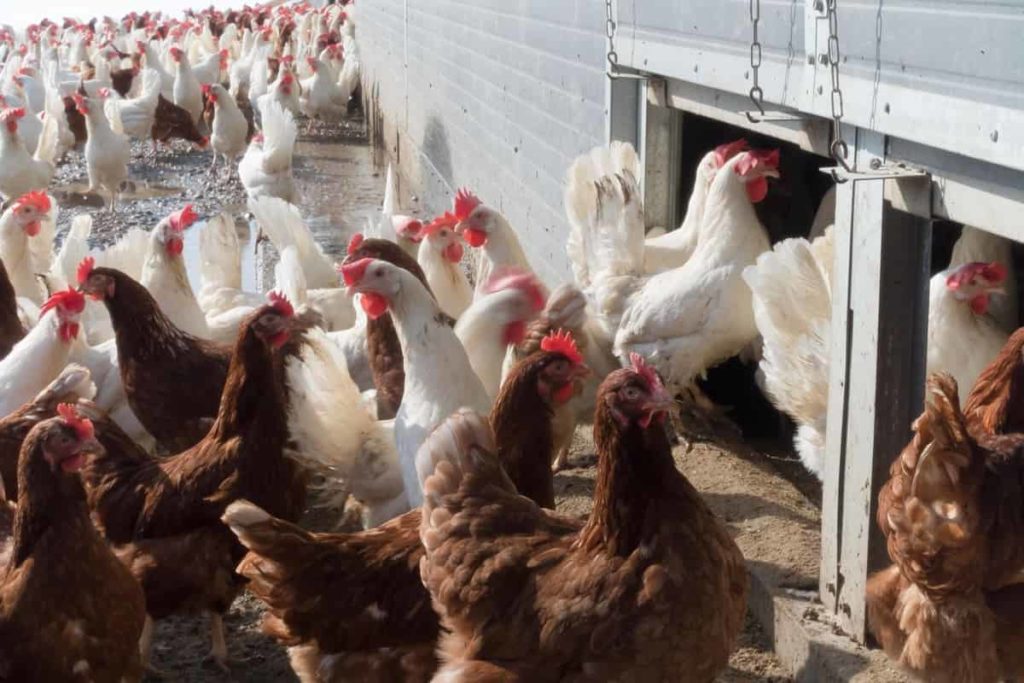
According to the Ministry of Agriculture, Nepal produces 1.61 billion eggs and 548,000 tons of meat annually. The poultry farming business is an emerging industry in Nepal. Healthy poultry production can pave the way for better income and sustainable development. Let’s check out more information about poultry farming in Nepal.
Is poultry farming profitable in Nepal?
Livestock, including poultry, is an integral part of the agricultural production system in Nepal, providing draft power for human consumption, fertilizers, and high-value animal proteins such as meat, milk, and eggs, which account for approximately 32% of agricultural GDP. Poultry farms use modern equipment, and organic chickens are raised on natural free-range land.
Due to high demand, poultry is growing rapidly in Nepal’s meat business sector. This refining system of chicken production provides high-quality animal protein in easy-to-use units for smallholders in dietary protein-deficient areas. In addition, extra eggs and birds are sold in the market, which generates cash to meet the immediate household needs of the family.
However, the organization of poultry production is changing rapidly as attitudes towards eggs and poultry are changing in response to better education and easing religious and social restrictions. Social groups, which previously did not allow chickens to be crushed near home, now enjoy eggs and poultry and understand the potential for raising poultry for economic gain. According to the survey, 75% of commercial chicken producers are making a profit.
Cost to start a poultry farm in Nepal
Poultry farms can be a good business in Nepal with proper care, a balanced diet, and regularly vaccinated chickens. These can cost around INR 5-7 lakhs per thousand chickens (including the price of chickens, vaccination, feeding, etc.
In case you missed it: Poultry Farming in Uttar Pradesh, How to Start, Schemes, and Loans
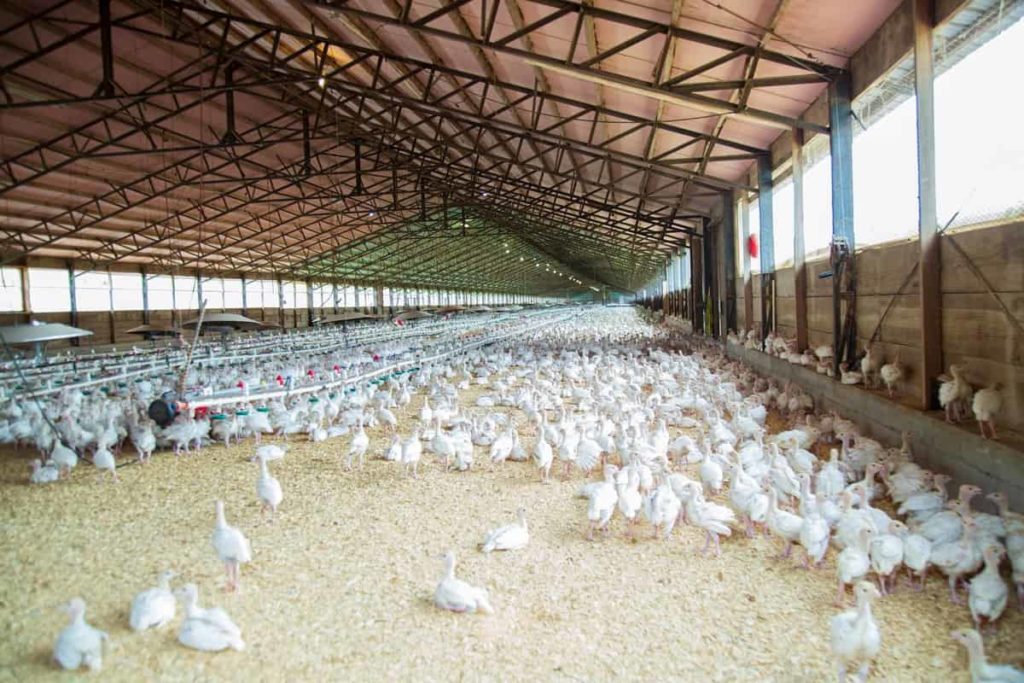
Scope of poultry farming in Nepal
The poultry farming business is an emerging industry in Nepal. Healthy poultry production can pave the way for better income and sustainable development. There are a wide scope and marketing opportunities for poultry farming in Nepal. The marketing of poultry is also increasing daily due to the change in eating meat and eggs. Nepal has an annual production of 114,058 tons, while egg production is 1.20 billion per year. A Nepali eats 4.1 kg per hen and 44 eggs annually.
With increasing consumer demand, the need to increase the productivity of individual birds is becoming clearer. Improvement in breeding, nutrition, disease control, marketing, and management can all play a role. However, achieving this requires a new approach so poultry farming can become profitable for families in mountainous villages and households close to urban centers. Nepal’s poultry population is estimated at 9.8 million birds, of which about 20% are improved breed, and the remaining 80% are considered an indigenous breed, Sakini.
There are 3.3 million laying birds in the country, producing an estimated 265 million eggs, an average of 80 eggs/hen/year. It means an annual per capita consumption of 15 eggs. With 180 eggs per capita with large regional variations in egg supply and nutritional requirements for the population, it can be seen that in less popular mountainous areas, there is great potential for increasing egg production.
Annual meat production in Nepal is about 140,000mt, providing an average of 20 grams/head/day to the total population. Poultry accounts for only 4.5%. Again, there is a big difference in production, distribution, and consumption in the physiographic region.
Poultry breeds in Nepal
Various exotic breeds have been introduced in Nepal, such as New Hampshire, Rhode Island Red, White Leghorn, Australop, Black Minorka, and other synthetic breeds. They are raised under an intensive management system with proper housing, nutrition, and health control. This more intensive production usually occurs near cities where a good, regular market is assured. On the other hand, indigenous breeds are reared under hygienic or semi-hygienic systems with less control and consequently higher levels of mortality and lower levels of production.
Types of poultry are reared in Nepal
- Shakini – Shakini is the largest breed of chicken in the country. They are suitable for hard and dual-purpose meats (famous for delicious meats) and eggs.
- Ghanti Khuile – It is tough and suitable for dual-purpose meat and eggs. They are hard and suitable for cleaning.
- Pwankhulte or Dumse chicken is challenging and suitable for dual-purpose meat and eggs. Their feathers are torn. They are found in small numbers all over the country. They are rare and require immediate attention to their protection. This breed of chickens is a common bird with outward growth of feathers. The average adult body weight of a male is 1.0 kg, and that of a female is 0.9 kg.
The major commercial poultry breeds are Cobb 100, Cobb 500, Kashila, Lohmann, H & N, Hyline, Marshall, and Rose308.
In case you missed it: Poultry Farming in Tamil Nadu, How to Start, Schemes, Loans, and Subsidy
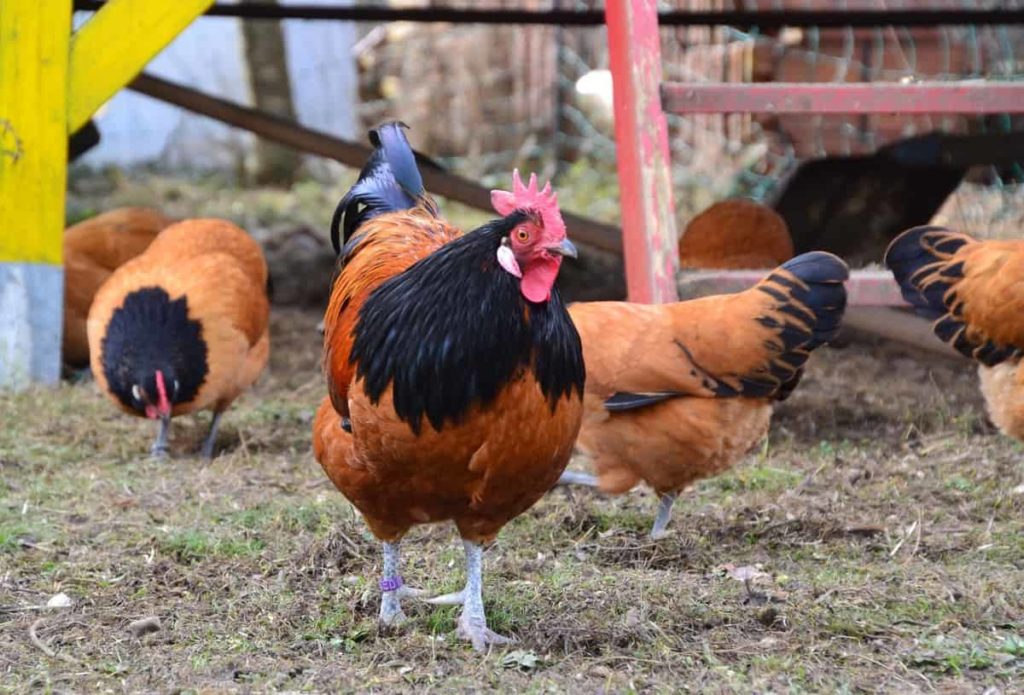
Housing for poultry birds
Housing for chickens should be protected from predators, theft, etc. Still, in Nepal, domestic chickens are generally reared in the free-range system in addition to deep litter and battery cage systems. However, animals are brought back to walled houses for protection. The use of bamboo to make chicken housing in Nepal.
It was found that 79% of rural households shared shelters with chickens and other animals such as goats and cats. Free-range chickens weighed more than captives and were more challenging because they ate the natural ingredients found around them. In the deep litter system, the chicken was fed twice daily with the recommended amount of commercial feed with fresh and clean drinking water.
Why is poultry important in Nepal?
In Nepal, chickens are traditionally raised by lower caste farmers, and their husbandry is part of the entire farming system. Poultry farming in remote areas of Nepal is still limited to the poor and lower castes, who are primarily a source of income by selling a common source of animal protein and extra poultry eggs and birds.
Management of poultry farm for profitable business
Poultry farming is the commercial rearing of domestic birds such as chickens, ducks, turkeys, etc. Poultry farming in Nepal and its popularity among local farmers is increasing. They regularly raise chickens for meat or eggs, which provides a quick return on our investment. Poultry is growing rapidly in the meat business sector in Nepal due to high demand. Poultry farming has become an essential aspect of agriculture for profitable business because,
- It creates business opportunities for traders.
- It also employs job-seeking citizens.
- This is the kind of business that can never be dry.
- It generates a lot of income.
Government policy for poultry production in Nepal
Poultry production in Nepal plays an important role in generating cash income and improving people’s food quality. However, the lack of a national policy on poultry production in the country is an obstacle to improvement. A small number of artificial poultry birds are reared in private urban areas to produce meat and eggs commercially under high management.
However, in the hills and mountains where 80% of the birds are reared, no attention is paid to the improvement of native birds under the scavenging management system. New Hampshire has a general government policy to divide dual-purpose breeds into mountainous areas. Still, lack of health care, poor nutrition, and high hunting rates mean this distribution policy has suffered negatively. Nevertheless, New Hampshire’s policy of distributing chickens continues.
Poultry production systems in Nepal
Modern farming methods can not only improve the current pattern of development of the poultry industry but also control production prices and, consequently, lower prices and increase population consumption. May increase demand for poultry products. New investment is also rising with the growing demand for poultry products and expanding existing farmers’ activities.
In case you missed it: Poultry Farm Insurance in India, Companies, Policy, and Premium
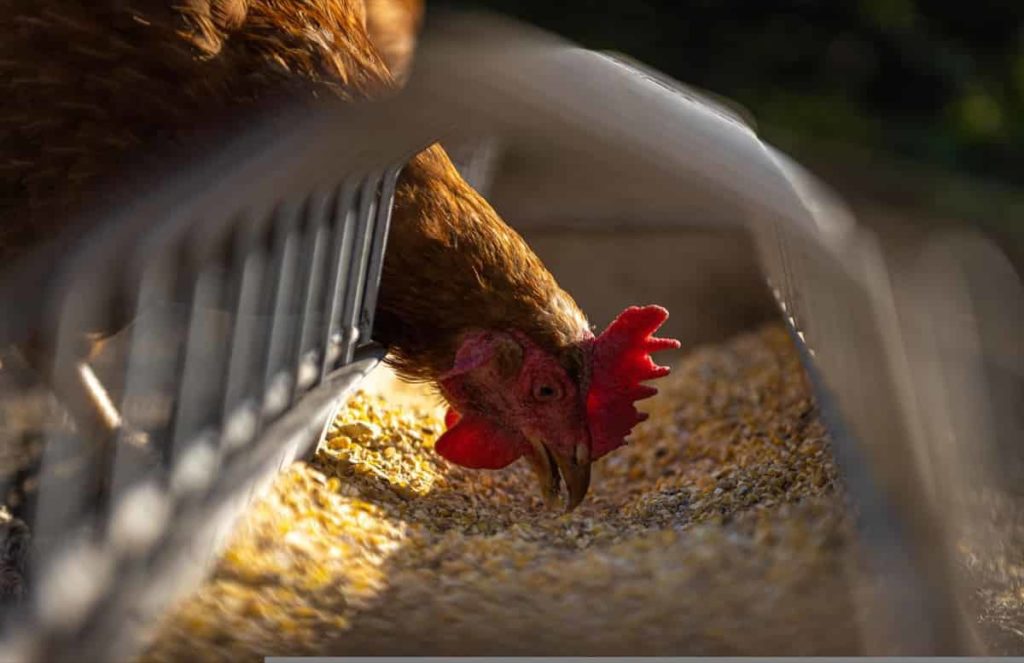
One billion Nepali rupees (NPR) is in the pipeline for investment in different parts of the country in the coming year. Poultry production systems in Nepal – Poultry production systems in Nepal can be classified into scavenging, semi-scavenging, and intensive.
Scavenging system
The majority of farmers in mountain villages keep birds under the free-range system. During the day, they scrape for food, and at night they are kept indoors to protect them from theft and predation. In this farming, chickens roam freely and pick up various foods such as insects, household waste, grass, and pebbles. They are less likely to be malnourished if a small amount of grain supplement is supplemented.
Nepali farmers, especially hill farmers, are busy most of the year, so keeping a few birds under a hygienic system gives them extra income in the form of eggs and meat. Native birds dominate this poultry rearing system in the village, but exotic breeds such as New Hampshire, Black Australorp, and Light Sussex are commonly seen. New Hampshire is the most famous of these.
In hill and mountainous areas, where food is deficient, sanitation is an effective way of raising chickens. The flock usually has three to four indigenous birds per household. Family members eat the eggs, and any surplus is sold locally. Local consumers prefer eggs and meat made from Sakini hens, which are kept under the scavenging system, even if they are more expensive. Therefore, the system rarely encounters a marketing problem.
The small-scale poultry production scavenging system is suitable for the fragile ecosystem of the hill as poultry birds may be present in the waste products, which help keep the environment clean. Therefore, in less desirable mountainous areas where access to roads is limited, it is preferable to keep resident chickens under sanitation.
Semi-scavenging system
This system means that the birds are allowed to roam freely for some part of the day, but, when necessary, they are stopped and supplemented with extra food. Many factors may be responsible for farmers adopting this system in village committees. Poultry can be protected from bad weather and can also be protected from predators by shutting them down when family members are engaged in activities away from home.
Farmers can also collect fertilizer to maintain soil fertility where chemical fertilizers are not feasible. It is a relatively new system; only a few farmers have adopted it. It requires the construction of a small house depending on the size of the flock. The house is usually low cost, built on the porch or erected separately, and is made of local materials such as bamboo.
While this system is common with indigenous birds, the availability of better breeds in the countryside means that the system is becoming more popular, as the sanitation system is better suited to birds and susceptibility to diseases. This system adapts to a range of herd sizes and can produce more eggs than a scavenging system if supplemental feed is provided. Therefore, it is especially suitable for farmers with surplus grain or regular access to supplementary food.
Deep litter (intensive) system
It is a method in which chickens are reared entirely on deep dung. High-quality rearing is required to realize the full potential of chickens in this system. In the village, a relatively large investment of money will be required for housing and food for keeping deep-litters chickens. Birds are raised indoors, so they need to be provided with a well-balanced diet. In mountainous areas, deep management requires a grain supply for raising chickens, which is already in deficit.
Under this type of management, foreign, more productive commercial breeds must be bred under a high input / high output system. Therefore, this type of farm is found in large cities and peri-urban areas where the market is secure and is generally not recommended for mountain farming situations. However, improved technologies in agriculture and expanded irrigation facilities in rural areas have increased crop intensity and resulted in increased grain production.
In case you missed it: Poultry Farming in West Bengal, How to Start, Schemes, and Loans
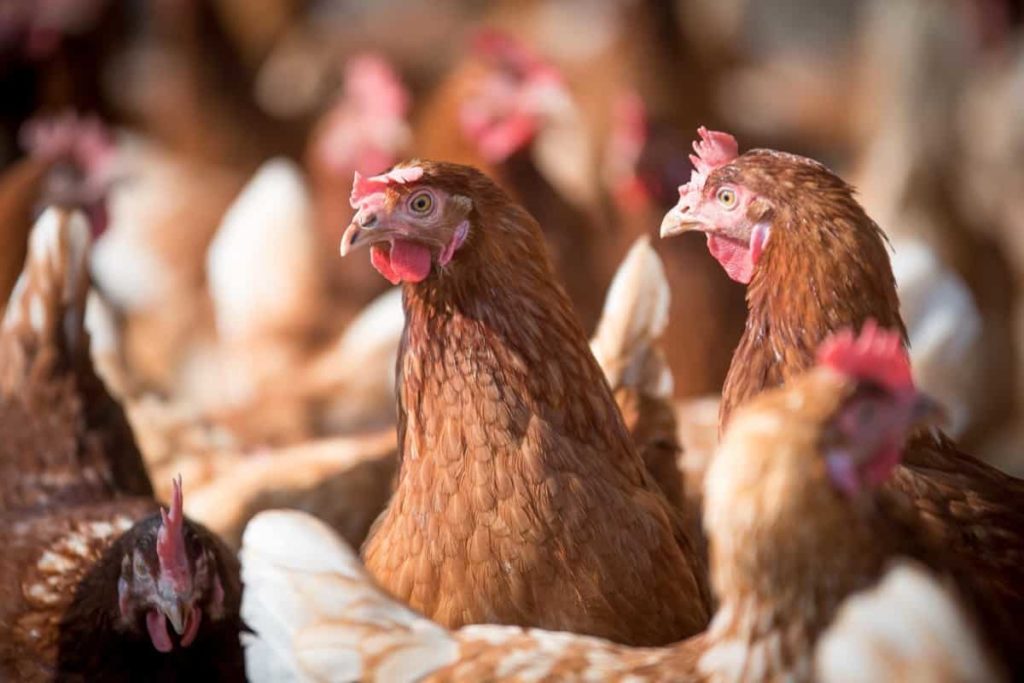
It has made it possible to run small-scale (10-20 hens) deep litter poultry production in some villages. One beneficial by-product is that deep litter poultry farming produces high-quality fertilizers, which, when added to the soil, increase soil fertility in areas where the purchase of chemical fertilizers may be limited in terms of availability and cost. Therefore, in areas with high crop intensity, it is considered that small-scale intensive poultry farming can be maintained where the local market is available.
Chicken farm in Nepal
Chicken farming in Nepal is very popular among Nepal’s urban and rural farmers. Poultry farming is one of the best ways for the villagers to get the most out of their pastures. There are many commercial chicken farms in Nepal; they started free-range chicken farming using the latest technology. Chickens live in a natural environment, provide a healthy supply of grass and grain, and raise chickens on a farm for meat, eggs, and down.
Chickens reared for eggs are generally called layers, while chickens reared for meat are often called broilers, but Nepali native hens are growing steadily in the country. Chicken farm controls all aspects of nutrition, breeding, selection, incubation, hatching, and breeding in the natural environment to produce high-quality poultry products.
Free-range chicken meat is healthier and tastier than industrial chicken. Many ethnic groups have been raising chickens naturally for a long time. Still, the trend of chicken farming is gradually changing, and most families have accepted chicken socially and culturally due to urbanization.
Naturally, raising chickens is more complicated than other types of poultry farming. Before starting organic chicken farming, it is important to know the facts, such as food, care, diseases, breed, and management of the chicken farm. Organic farm Nepal provides chicken farming training and practical information for all farmers interested in chicken farming.
Sustainable prospects of poultry production in Nepal
Nepal is currently unable to produce excess food in surpluses of the needs of the human population. Therefore, the poultry industry has become a responsibility rather than an asset. The production of smallholder rural poultry, if adequately developed, has the potential to produce sustainable poultry. The program should establish projects to understand the rural poultry production system and its weaknesses. Develop and test new methods that will not only overcome these vulnerabilities but also be affordable and sustainable.
The unsustainable nature of heavy poultry production requires a quick search for locally grown low-grain feedstuffs for chicken. In well-organized pasture systems, producers use very little medication, as proper hygiene and a healthy growing environment help prevent health problems before they begin. When using the low-quality feed, vitamins obtained from birds feeding on grass can balance nutritional deficiencies in feed rations.
Health management for Poultry farming in Nepal
Poultry health management is important due to the emergence of highly pathogenic diseases in different parts of the world. Biosecurity measures are essential for better poultry production performance and quality in a competitive world. The latest technological advances can help adopt biosecurity measures and environmentally friendly practices in poultry production systems. A biosecurity policy can be developed with the participation of stakeholders. It will provide new dimensions to poultry farming in different clusters in Nepal.
In addition, the participatory response of poultry entrepreneurs will be invaluable for programs that prioritize poultry disease research, eradication, and poultry industry protection. Poultry health management is an emerging issue with the biosecurity initiative. It promotes organic farming in rural areas. Biological conservation measures, poultry farm management, and organic farming become a cycle of sustainable development in rural areas.
Farmers used to keep a few birds in the villages’ sanitation system and the native chickens in the backyard. Therefore, due to close contact, poultry disease is at risk in cattle and human populations. It should be avoided in the long run for better hygiene practices. Poultry farming has made tremendous progress in the last six decades and generates income in urban and per urban areas. Demand for poultry has increased due to tourism and changing food habits.
Problems faced by poultry farmers in Nepal
Poultry farmers face many challenges due to the high cost of feed and medicines, emerging new diseases, and lack of biosecurity measures. Bird flu often spreads in South and East Asia, causing panic among stakeholders. Government policies on biosecurity are not enough. Poultry farmers and small business owners in the backyard will feel the burden of biosecurity. However, it is also a helpful and cost-effective method for businesses in the long run.
The District Livestock Services Office (DLSO) disease reporting system comes from various service centers in Nepal. They gather information from district backyard poultry farms and small commercial farms. They do not know large commercial farms. So epidemiological surveillance reporting is incomplete and cannot be properly interpreted.
Biosecurity is one of the proposed methods on farm premises, which initially costs some extra investment but will be cheaper in the long run. Biosecurity is essential for effective disease control. Involvement in treatment and safety measures and their cost will be reduced. In addition, biosecurity measures should include awareness and training programs.
Nepal produces various vaccines for livestock and poultry on its own, and vaccination of poultry birds as per schedule is one of the measures to strengthen biosecurity in poultry farms. Poultry diseases are a significant cause of underdeveloped poultry farming. Farmers are not aware of various diseases and how to control them. Major infectious diseases include Brussels, Newcastle, mycoplasmosis, coccidiosis, etc. There is a lack of vaccination and administrative methods in these cases. This results in poor production.
In case you missed it: Common Mistakes Everyone Makes in Poultry Farming
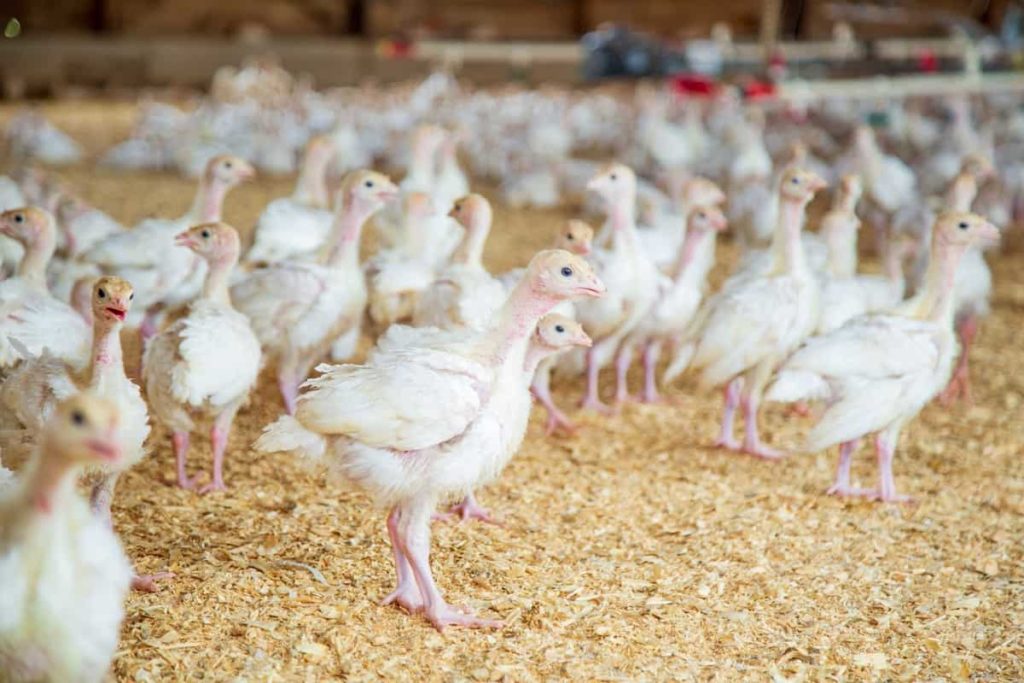
Lack of modern diagnostic laboratories: The lack of modern laboratories for diagnosing diseases in chicken and testing the quality of feed and meat are some of the major setbacks facing the poultry industry in Nepal. It has created an unfavorable business environment for poultry farmers and sellers. Compared to mutton and buffalo meat, chicken meat is less prone to contamination, so proper inspection and construction of storage laboratories can help reduce diseases in chickens.
Wrong types of chickens and indiscriminate breeding methods – The chickens may have originally come from another country. In rural conditions, local chickens are often the most reliable and profitable. There are no good breeding methods for poultry production on demand. Indigenous peoples are declining sharply. The production and improvement of these native breeds can result in better production.
Conclusion
Poultry farming in Nepal and its growing popularity among local farmers regularly raise chickens for meat or eggs, which provides a quick return on your investment. Organic farm Nepal has set up the first pasture-rearing poultry farming business in Nepal, which has increased poultry production in Nepal for free. You should follow the above steps for better production in poultry farming in Nepal.
- Types of Pesticides Used in Agriculture: A Beginner’s Guide
- Economical Aquaculture: A Guide to Low-Budget Fish Farming
- 15 Common Planting Errors That Can Doom Your Fruit Trees
- How to Make Houseplants Bushy: Effective Tips and Ideas
- Innovative Strategies for Boosting Coconut Pollination and Yield
- Pollination Strategies for Maximum Pumpkin Yield
- The Complete Guide to Chicken Fattening: Strategies for Maximum Growth
- Natural Solutions for Tulip Problems: 100% Effective Remedies for Leaf and Bulb-Related Issues
- Revolutionizing Citrus Preservation: Towards a Healthier, Greener Future
- Natural Solutions for Peony Leaf and Flower Problems: 100% Effective Remedies
- Maximizing Profits with Avocado Contract Farming in India: A Comprehensive Guide
- Natural Solutions for Hydrangea Problems: 100% Effective Remedies for Leaf and Flowers
- The Ultimate Guide to Choosing the Perfect Foliage Friend: Bringing Life Indoors
- From Sunlight to Sustainability: 15 Ways to Use Solar Technology in Agriculture
- The Ultimate Guide to Dong Tao Chicken: Exploring from History to Raising
- The Eco-Friendly Makeover: How to Convert Your Unused Swimming Pool into a Fish Pond
- Mastering the Art of Delaware Chicken Farming: Essentials for Healthy Backyard Flocks
- 20 Best Homemade Fertilizers for Money Plant: DIY Recipes and Application Methods
- How to Craft a Comprehensive Free-Range Chicken Farming Business Plan
- Brighten Your Flock: Raising Easter Egger Chickens for Beauty and Bounty
- How to Optimize Your Poultry Egg Farm Business Plan with These Strategies
- Subsidy for Spirulina Cultivation: How Indian Government Schemes Encouraging Spirulina Farmers
- Ultimate Guide to Raising Dominique Chickens: Breeding, Feeding, Egg-Production, and Care
- Mastering the Art of Raising Jersey Giant Chickens: Care, Feeding, and More
- Ultimate Guide to Raising Legbar Chickens: Breeding, Farming Practices, Diet, Egg-Production
- How to Raise Welsummer Chickens: A Comprehensive Guide for Beginners
- How to Protect Indoor Plants in Winter: A Comprehensive Guide
- Ultimate Guide to Grow Bag Gardening: Tips, Tricks, and Planting Ideas for Urban Gardeners
- Guide to Lotus Cultivation: How to Propagate, Plant, Grow, Care, Cost, and Profit
- Agriculture Drone Subsidy Scheme: Government Kisan Subsidy, License, and How to Apply Online
- Ultimate Guide to Raising Araucana Chickens: Breed Profile, Farming Economics, Diet, and Care
- Bringing Hydroponics to Classroom: Importance, Benefits of Learning for School Students
- Ultimate Guide to Raising Polish Chickens: Breed Profile, Farming Economics, Diet, and Care
- Ultimate Guide to Raising Australorp Chickens: Profile, Farming Economics, Egg Production, Diet, and Care
- Silkie Chicken Farming: Raising Practices, Varieties, Egg Production, Diet, and Care
- Sussex Chicken Farming: Raising Practices, Varieties, Egg Production, Diet and Care